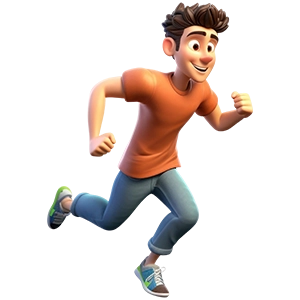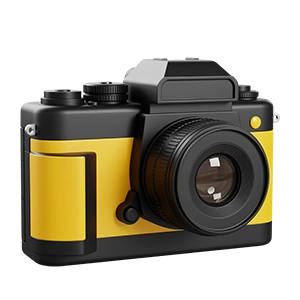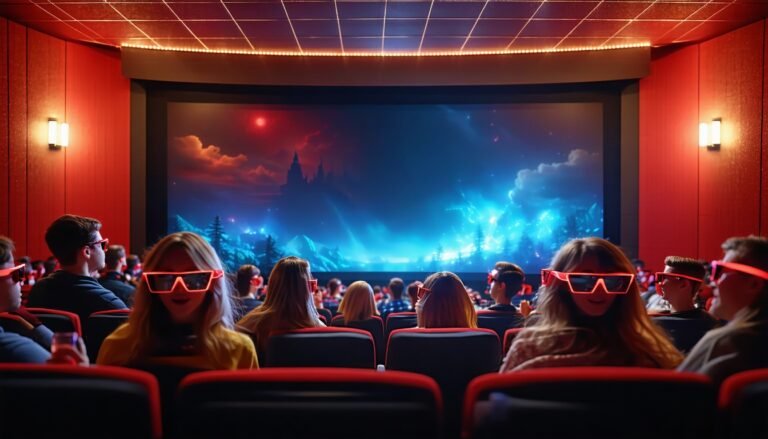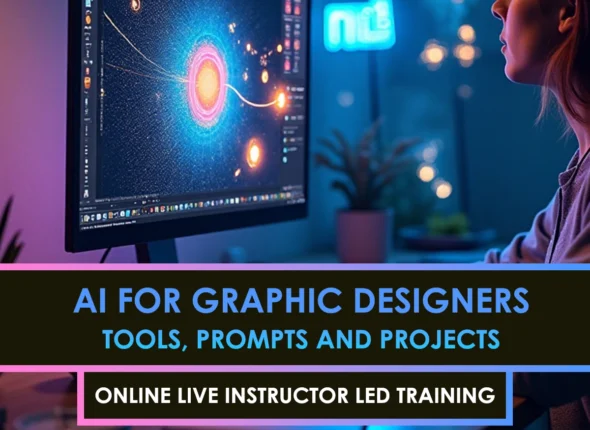Understand stereoscopic foundations
Stereoscopic effects in movies can transform your visual storytelling from flat to awe-inspiring. By creating the illusion of depth, you invite your viewers to step into a more immersive environment. Yes, it can be tricky at first, but once you see that perfect 3D pop in your footage, you’ll never want to go back.
Why depth matters
- Audience engagement: Proper 3D depth places viewers right in the action, making scenes feel tangible.
- Emotional impact: When you craft depth carefully, your storytelling gains nuance, and characters appear more lifelike.
- Technical mastery: Stereoscopic work is an essential skill that can set you apart in the industry.
If you want a deeper dive into 3D illusions, you might enjoy exploring our 3d depth creation techniques. It helps you fine-tune depth cues to create that perfect sense of immersion.
Set up your 3D pipeline.
Before you dive into the advanced features, you need a solid workflow in place. This includes everything from camera choices to software setups, so you can avoid those dreaded “wait, my left eye sees something different” moments.
Camera alignment tips
Filming for stereo means using two cameras or a specialized rig with a single camera that simulates multiple perspectives. Here are a few things to consider:
- Calibration: Align cameras (physical or virtual) as precisely as possible to avoid headaches during post.
- Interaxial distance: Adjust the space between the cameras to control the amount of perceived depth.
- Framing: Pay attention to composition. Misdirected angles can produce weird parallax errors.
For more on harnessing advanced tools, check out VFX for 3d movies. You will find practical advice to enhance your shots once you have your footage ready.
Depth mapping basics
Depth mapping is essentially assigning distance data to different parts of your scene. But if you rush it, you might end up with artifacts that scream, “Something’s off.”
- Consistent lighting: Inconsistent light references can produce inaccurate depth readings.
- Clean edges: Meticulously refine edges, especially around hair or clothing.
- Color channels: Be aware of color spill, which can disrupt your depth perception.
If you’re curious about how depth mapping can fit into your overall process, consider exploring depth mapping in filmmaking. It covers strategies to optimize your depth maps for realistic 3D results.
Polish with specialized VFX
Once your files are ready for post, you will want to add that final layer of magic. This step involves compositing, color correction, and resolving the dreaded ghosting or crosstalk issues that can ruin an otherwise significant effect.
Layer compositing and color balancing
- Layer priority: Decide which elements need to stand out in the foreground versus those that should recede into the background.
- Edge refinement: Clean up halos or fuzzy borders by refining alpha channels.
- Color consistency: Even minor mismatches in color can break the illusion of depth, so you want uniform color grading across both “eyes.”
Overcoming ghosts and artifacts
Ghosting is when objects seem to double or leave a thin trail. It can make your viewers question whether their eyes are deceiving them. Here is how you fight back:
- Adjust disparity levels: Overly large disparity can push elements too far in or out of the screen, causing visual fatigue.
- Validate your rig: Keep camera lenses clean and your alignment tight. Optical glitches can cause lasting artifacts.
- Preview regularly: A quick side-by-side check during compositing helps you catch ghosting early, sparing you big headaches later.
If you want to take your 3D illusions even further, consider exploring advanced stereoscopic filmmaking techniques. It dives into merging cutting-edge VFX with thoughtful depth planning for spectacular on-screen results.
Wrap up your 3D approach.
Making your scenes leap off the screen goes beyond simply putting two cameras side by side. It’s about achieving perfect alignment, thoughtful depth mapping, and a polished post-production workflow that eliminates visual quirks. Yes, it can get intricate, but a strong stereoscopic effect can be the game-changer that sets your work apart. Continue experimenting, reviewing, and optimizing each stage, and you will establish a reputation for creating breathtaking 3D experiences that truly captivate your audience’s imagination.
FAQS – Frequently Asked Questions
What are stereoscopic effects in movies?
Stereoscopic effects create the illusion of depth in movies by simulating binocular vision, allowing viewers to perceive a 3D effect using special glasses.
How do stereoscopic effects work in filmmaking?
They work by capturing two slightly different images for each eye and then displaying them simultaneously to simulate human depth perception.
What is the difference between 3D and stereoscopic movies?
3D refers to the visual experience, while stereoscopic is the technique used to achieve that experience by displaying two separate images to each eye.
What equipment is used to shoot stereoscopic films?
Special dual-lens cameras or rigs that hold two cameras side-by-side are used to capture stereoscopic footage.
Are all 3D movies created using stereoscopic effects?
Most 3D movies use stereoscopic techniques, though some are post-converted to 3D rather than being shot natively in stereo.
Why do some viewers get headaches from stereoscopic movies?
Improper alignment, excessive parallax, or poorly calibrated visuals can strain the eyes and cause discomfort.
How is depth controlled in stereoscopic filming?
Filmmakers adjust interaxial distance and convergence to control the perceived depth and comfort for the viewer.
Can stereoscopic effects be added in post-production?
Yes, 2D-to-3D conversion techniques are used in post-production, though results may not match the quality of native stereo capture.
What are some famous movies that use stereoscopic effects?
Movies like 'Avatar', 'Gravity', and 'The Hobbit' trilogy are renowned for their use of stereoscopic 3D technology.
What is parallax in stereoscopic imaging?
Parallax is the horizontal shift between the left and right images; controlling it is crucial for comfortable and effective 3D viewing.
How do polarized 3D glasses work with stereoscopic films?
They filter light so that each eye sees only one image, allowing the brain to fuse them into a 3D visual experience.
Is it more expensive to produce stereoscopic films?
Yes, it requires specialized equipment, additional planning, and more post-production resources.
What is the role of CGI in stereoscopic movies?
CGI elements are rendered twice—once for each eye—to match the stereoscopic perspective and ensure consistency.
Are IMAX 3D and regular 3D movies different in stereoscopic technology?
IMAX 3D often uses higher resolution and larger screen formats, but the stereoscopic principle remains the same.
How do filmmakers preview stereoscopic shots during production?
Using 3D monitors or stereoscopic playback systems, filmmakers can view how scenes will look in 3D on set.
Can stereoscopic effects be used in animation?
Yes, animated films can be rendered with stereoscopic depth by creating two camera views during the animation process.
How does lighting affect stereoscopic filmmaking?
Uneven lighting can cause inconsistencies between left and right views, making it harder to achieve a clean stereo effect.
Why is alignment critical in stereoscopic filming?
Misalignment between the two images can cause eye strain and break the illusion of depth.
What is the '3D window violation' in stereoscopic cinema?
It happens when objects appear to protrude past the screen edge, disrupting depth cues and viewer comfort.
Can viewers watch stereoscopic movies without glasses?
Glasses-free 3D displays exist, but they are not yet standard in theaters due to cost and viewing angle limitations.
What are the limitations of stereoscopic effects in movies?
They can reduce image brightness, introduce visual artifacts, and require strict control over composition and depth.













